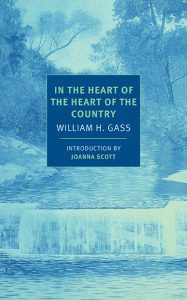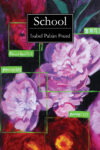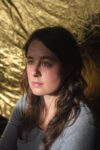A book, unlike its author, gets a chance at a second life. It may spend years in the cobwebbed corner of a remainder bin, before being resurrected in a brand new edition that beams proudly from the shelves. Though the body is identical, the book sheds, like an old dust jacket, much that clung to its previous incarnation — reviews that were less than kind, a reputation for middling sales. A new cover is commissioned, the first step toward a new way of looking at the words on the page. New words are added as well, usually by an esteemed author or critic, to make the case for the book’s continued relevance in the present day. Thus scrubbed behind the ears and bearing a letter of recommendation, the book hopes to make a better impression this time around — and maybe, if the literary gods are kind, stick around for good.
This is the happy prospect that lies before William H. Gass’s collection of short fiction, In the Heart of the Heart of the Country, which was reissued earlier this month by NYRB Classics. But this isn’t the first time that these fictions — two novellas and three short stories — have been brought back from the dead; by my count, this is the book’s fourth time at the fair, including its 1968 hardcover debut. Its chronic brushes with oblivion may mean, like some species with a congenital defect, it was never meant for this world. But it is more likely that Gass is precisely the kind of writer who could use a fresh start.
That may sound like an odd statement. Gass, after all, is as established as they come. His first novel, Omensetter’s Luck (1966), is widely considered to be a classic of postwar American fiction. He has won a small mountain of accolades, including the National Book Critics Circle Award for criticism three times. He has been praised to the skies by our nation’s most prestigious publications and critics, dubbed “the finest prose stylist in America” by Steven Moore, to pull but one example. His most recent novel, Middle C (2013), was published by Knopf and landed on the cover of The New York Times Book Review. In the world of literature, he is the equivalent of a made man.
Still, despite his awesome talents and imposing intellect (or because of them), there remain profound misgivings about Gass. He is not beloved by the literary establishment the way Philip Roth or John Updike are. His name is hardly ever brought up in the annual guessing game that precedes the Nobel Prize for Literature. There is a sense that he is just too smart for his own good. In an otherwise admiring review of Reading Rilke, Gass’s book-length study of the poet and the art of translation, Daniel Mendelsohn threw out a typical gripe about Gass, writing, “As elsewhere in Gass’s work, delicacy of perception, and of expression, can curdle too easily into a showoffy preciousness. (There was a lit teacher in my high school who’d actually earned a Ph.D. in English, and she wanted you to know it; Gass sometimes sounds just like her.)”
His perceived flaws don’t end there. He is an unapologetic snob. He has a get-off-my-lawn attitude toward what the kids are doing these days. If the modern celebrity author has more than a dash of self-help guru in him, affirming the fundamental goodness of life on every starry-eyed page, then Gass is the last person cut for the part. He has a rather dim view of people generally, once claiming that his books aim to “indict mankind.” He has no beatific maxims about writing that aspiring pen-pushers can copy and paste into their Facebook feed. “I write because I hate,” he told The Paris Review. “A lot. Hard.”
If Gass were merely an enfant terrible, perhaps the press could have slotted him alongside Michel Houellebecq and Martin Amis and called it a day. But for many critics the aversion to Gass goes much deeper, amounting to a kind of moral repugnance. This was especially apparent in the reception to The Tunnel (1995), his magnum opus about a sex-crazed historian with Nazi sympathies, which critics either loved or hated — a lot and hard, as Gass would have it. If some were ready to place Gass shoulder to shoulder with Proust and Mann, others were appalled by the narrator’s black obsessions, which were sometimes mistaken for the author’s. “It is an act of ventriloquism: behind the repulsive, potentially fascist narrator stands his critic, the novelist, presumably committed to humane, democratic values,” wrote Robert Alter in The New Republic. “But those values are nowhere intimated in the book, and what emerges is a kind of inadvertent complicity between author and protagonist.” Indeed, looking over the colorful responses to The Tunnel collected by The Complete Review, it’s hard to think of another novel that has been so zestfully reviled.
But perhaps the most grievous wound to Gass’s reputation is his continued association with a group of American postmodern writers — including Pynchon, Gaddis, Hawkes, Barth, Coover, and Barthelme — who dominated the field in the 1960s and 70s, but have since come under the critical lash. Detractors say the postmodernists indulged too deeply in cerebral metafictions, so that the novel no longer held up a mirror to the world but only to itself. In their hands, the joy of reading soured into a tedious exercise in code-breaking and allusion-getting, a treasure hunt with no treasure drafted by the most irritating know-it-all in class. These spawn of Joyce led American fiction astray, put it out of reach, and they did it at a time when literature was already breaking from the nucleus of American culture, hastening its arrival at a very distant position on the periphery. They were, to put it bluntly, just too damned difficult.
The generation that succeeded the postmodernists was particularly keen to show them the error of their ways. The effort reached its peak with the release of Infinite Jest in 1996, which combined E.M. Forster’s exhortation to “only connect” with a zany, continent-spanning plot from the Pynchon playbook, and its nadir with Jonathan Franzen’s notorious 2002 essay “Mr. Difficult,” a misguided, near-pathological attempt to assassinate the character and reputation of William Gaddis. The campaign against the postmodernists continues to this day; look no further than the latest issue of Dissent, where the novelist Benjamin Hale, in an essay by turns wise and exasperating, chides Gass and his ilk for being “too anxious about looking smart” and failing to write books that offer “genuine pleasure.” It is with amused dismay that Hale finds that his creative writing students continue to be drawn to the postmodernists, writing:
These are the “smart” books that “smart” guys (especially guys) in college have been forcing themselves to love since the 1970s, and I’m a little amazed (I shouldn’t be) to find that the students in my fiction classes (again, especially the guys) still read and enjoy these books. The same books, for at least the last thirty, nearly forty years. And undergrads in liberal arts schools are still trying to imitate them. I guess maybe it’s a phase one needs to go through or something.
But while Gass may be a formidable figure in the world of academia, waiting in the dark crags of high modernism to ensnare innocent young writers the way Shelob does Hobbits, he is little more than a rumor outside it. Even in a cultural center like New York City, it is difficult to find a bookstore that carries his work. It’s hard to imagine any major media outlet celebrating a documentary about him, assuming that it would occur to anyone to make one. Infinite Jest, published a year after The Tunnel, seems to have muscled out all its predecessors in terms of influence, trickling down into pop culture and serving as an archetype for the nerd-hip style of writing that is everywhere on the internet.
But here’s where Hale really gets it wrong: reading Gass is pleasurable! There is, for one, the sheer pleasure of his prose, which shines in his criticism, but approaches a purity akin to music in his fiction, particularly when read in great lengths. And while Gass may have a reputation for not “car[ing] enough about human beings,” as Hale writes, he actually has a soft spot for humanity’s sad sacks and failures, the unlovable losers whose existences have been rejected, forgotten, and passed over. That Gass is unpleasant to read, that his work is enclosed in an aesthetic bubble divorced from the realities of humdrum human existence, are just two misconceptions about his work. Another is that he shares much in common with Pynchon, Gaddis, et al., other than an era and a passport. And though it would be disingenuous to claim that his books are simple or easy, he is not an obfuscator by nature, but rather one who would show you how a thing works, whether it’s the clockwork of a sentence by Henry James or the heart of a fascist.
So what would we say about Gass if we could wipe the past clean, if we could approach In the Heart of the Heart of the Country as if it were born only yesterday? We could start by celebrating the fact that we are being treated to the best of both worlds, the fiction and the non-, for included in this edition is a preface that Gass wrote the first time the collection was brought back into print. It is about how these stories came into being and what they might mean, but it is also a melancholy ode to the writing life that will be a consolation and an inspiration to anyone who has seen their noblest thoughts and feelings crumble into ash on the page. “I willed their existence, but I don’t know why,” Gass writes of these stories. “Except that in some dim way I wanted, myself, to have a soul, a special speech, a style.”
Gass’s special speech is everywhere in these stories. It can spit with spite, talk down from a high ironic remove, or play games with a Nabokovian sense of mischief. But my favorite of Gass’s prose styles occupies a sadder register, a cold universe shaded blue by loneliness and gloom. Here is Fender, the main character in “Icicles,” a struggling real estate agent who grows obsessed with the icicles growing from the eaves of his home:
Just for a moment he was pleased and the fluid of the pie seemed thick and rich, but his pleasure was quickly gone and he felt himself empty like one of his houses, staring out at the wind and snow, at the undulating lanes of light and shadow, waiting for someone…anyone…to enter.
Such moments of misery are often juxtaposed with the sudden apprehension of beauty, such as here, when Fender becomes transfixed by the icicles he sees through the window:
No, he was finished for the evening; he was bored by his own voice; yawns stretched his jaws and filled his eyes with tears. The phone calls would have to wait. The snowlight, though soft now, had made his eyes burn, he decided, and he put down his fork to press them tenderly and wipe the moisture from their corners. He resolved, though weakly, to draw the drapes, but as he shifted in his chair the long row of icicles blazed and his breath went out of him. For an instant Fender sat quite still, as someone wounded may who does not know what pain he’ll bring himself or blood he’ll spill, but his eyes were drawn into the string and held while the light from the living room lay burning in them. The purity of the ice was astonishing, the tips were like needles, and they ran together at their source like fingers into palms. Snow was no longer melting and the icicles had a hard dry gleam. He sat aside his tray and stood.
Indeed, despite his reputation for being a nasty bit of work, Gass is very preoccupied with beauty — not just in making beautiful sentences, though there are a glutton’s worth of those, but in bringing out the beauty of the things themselves. The narrator of “The Order of Insects” is a housewife whose imagination becomes overrun by the secret lives of the bugs in her home; in this passage, she describes in loving detail the corpses of two kinds, one adult, one nymph, that she finds on her carpet:
The one was dark, squat, ugly, sly. The other, slimmer, had hard sheath-like wings drawn over its back like another shell, and you could see delicate interwoven lines spun like fossil gauze across them. The nymph was a rich golden color deepening in its interstices to mahogany. Both had legs that looked under a glass like the canes of a rose, and the nymph’s were sufficiently transparent in a good light you thought you saw its nerves merge and run like a jagged crack to each ultimate claw.
In the magnificent title story, a tale steeped in weary sorrow that takes the ostensible form of a census-like survey of a small Midwestern town, the narrator makes a more direct appeal to beauty that also manages to be more abstract:
Leaves move in the windows. I cannot tell you yet how beautiful it is, what it means. But they do move. They move in the glass.
What, you may ask, is the purpose of all this beauty? Where are these seemingly aimless stories taking us? Let’s start with those windows, both in “Icicles” and the title story; windows are important to Gass, they are where we swim up to the world like fish in a bowl. That is where we are headed, the porous boundary where the world and the self meet, each passing through the other until, like a rolled-up sock, the outside is in and the inside is out. For Gass, this is literature’s purpose: to depict the world after it passes through our eyes and ears and skin into inwardness. That is what he means when he talks about finding the world within the word, for that is the only place where the world exists in any true sense, in our sensations, our thoughts, our imagination, and ultimately our art.
Throughout In the Heart of the Heart of the Country, we see this in-out dynamic play out. The book imagines what we would be like if our bones showed like a roach’s, and is concerned with the leaves that stir in the soul. In “Mrs. Mean,” the story of a voyeur, the narrator describes his desires thusly:
I am terribly and recklessly impelled to force an entrance to their lives, the lives of all of them; even, although this is absurd, to go into the fabric of their days, to mote their air with my eyes and move with their pulse and share their feeling; to be the clothes that lie against their skins, to shift with them, absorb their smells.
“The Pedersen Kid” features a boy who overcomes many obstacles — an alcoholic father, a brutal winter landscape, evil incarnate — to finally penetrate a neighbor’s house, only to find, at the bottom of a cold cellar, himself:
Distantly I felt the soft points of my shoulders in my jacket, the heavy line of my cap around my forehead, and on the hard floor my harder feet, and to my chest my hugged-tight knees. I felt them but I felt them differently…like the pressure of a bolt through steel or the cinch of leather harness or the squeeze of wood by wood in floors…like the twist and pitch, the painful yield of tender tight together wheels, and swollen bars, and in deep winter springs.
Of course, Gass is not the first writer to see a world within the confines of a consciousness. But it is the world he finds there that sets him apart, and it is what gives context to his oft-quoted enthusiasm for hate. If Rilke once warned us not to seek the end of our sorrows — “they are our serious winter trees, our dark evergreens, one season of our inner year” in Gass’s translation — then something similar can be said of feelings even darker. While few would go as far as Gass, fewer still have the courage to acknowledge the hate within themselves.
At any rate, that’s not all Gass sees in the inner mirror that, like some great volcanic lake, cradles the world. There are little boys scared of the dark; winter weather that never lifts; spiders that clench their long legs like a fist; blue tunnels of snow; dirty magazines; and, most generously, a wondrous space where those icicles grow.
Ryu Spaeth is a deputy editor at TheWeek.com
This post may contain affiliate links.








